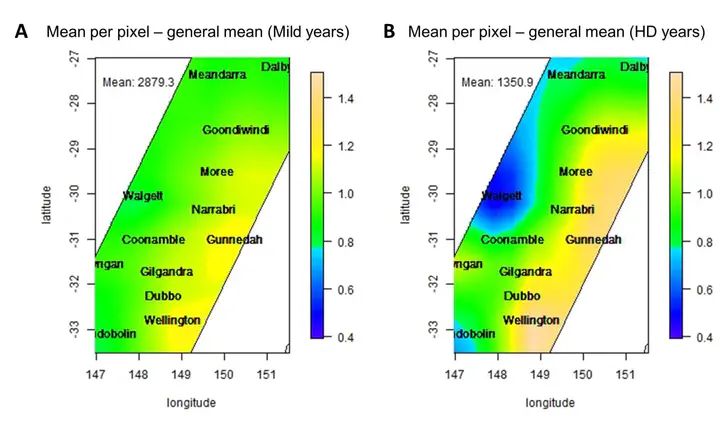Genotype specific P-spline response surfaces assist interpretation of regional wheat adaptation to climate change
 Response surfaces for each genotype
Response surfaces for each genotype
Abstract
Yield is a function of environmental quality and the sensitivity with which genotypes react to that. Environmental quality is characterized by meteorological data, soil and agronomic management, whereas genotypic sensitivity is embodied by combinations of physiological traits that determine the crop capture and partitioning of environmental resources over time. This paper illustrates how environmental quality and genotype responses can be studied by a combination of crop simulation and statistical modeling. We characterized the genotype by environment interaction for grain yield of a wheat population segregating for flowering time by simulating it using the APSIM cropping systems model. For sites in the NE Australian wheat-belt, we used meteorological information as integrated by APSIM to classify years according to water, heat and frost stress. Results highlight that the frequency of years with more severe water and temperature stress has largely increased in recent years. Consequently, it is likely that future varieties will need to cope with more stressful conditions than in the past, making it important to select for flowering habits contributing to temperature and water stress adaptation. Conditional on year-types, we fitted yield response surfaces as functions of genotype, latitude and longitude to virtual multi-environment trials. Response surfaces were fitted by two-dimensional P-splines in a mixed-model framework to predict yield at high spatial resolution. Predicted yields demonstrated how relative genotype performance changed with location and year-type and how genotype-by-environment interactions can be dissected. Predicted response surfaces for yield can be used for performance recommendations, quantification of yield stability and environmental characterization.